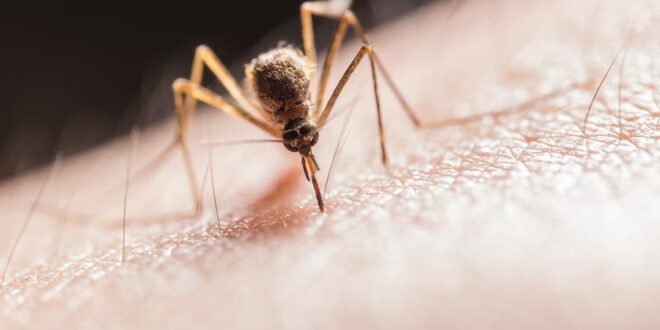How long do sand flea bites last on humans? If you have ever left the beach with an itching sensation, that was probably a sand flea bite.
And believe it; you are not alone! Sand flea bites are common for individuals who spend time in sandy beach areas or tropical regions.
These tiny insects go by many names, beach fleas or sand hopper fleas, but one thing common among them, we hate them!
Who wants to return home from the beach with an itchy and irritating bite on the skin as a souvenir?
Understanding the duration of these bites is important for those seeking relief and wanting to know when they can expect them to heal.
Ahead, we’ll look at everything you need to know about sand fleas, how to treat the sand bite, how to prevent sand bites, and much more, but first, let’s answer our main question;
How Long Do Sand Flea Bites Last On Humans?
The duration of the effects can vary from person to person, with some individuals experiencing symptoms for only a few days while others may have them persist for several weeks.
The severity of the reaction plays a significant role in determining how long the bites will last. Scratching at the wound can exacerbate the symptoms and prolong the healing process, so don’t!
What Is Sand Flea?
Sand fleas, despite their name, are not fleas. They belong to the family of crustaceans known as Talitridae.
These small creatures have several names, including beach hoppers, sand fleas, lawn shrimp, land hoppers, or sand hoppers.
There are approximately 90 different types of sand fleas in the United States, and they can be found along coastal areas all over North America, South America, The West Indies, Sub-Saharan Africa, and India.
Sand fleas are most active at night when they come out in search of food. During the day, they often bury themselves in the sand to avoid predators and conserve moisture.
When the sun sets, they emerge and scurry across the beach, searching for decaying plant matter and other small organisms to feed on.
While most types of sand fleas are relatively harmless to humans, one type, chigoe fleas, poses a greater threat.
These fleas are notorious for burrowing into the soles of our feet, where the mated females lay eggs and eventually die. This can cause intense itching and discomfort, and if left untreated, it can lead to secondary infections.
What Does A Sand Flea Bite Look Like?
Sand flea bites usually appear as small red raised bumps on the skin and tend to present in clusters.
Despite their small size, sand flea bites can be quite painful. They are often more painful than mosquito bites, which can be easily confused with sand flea bites due to their similar itchiness.
How Painful Is The Sand Flea Bite?
Sand flea bites can vary in terms of pain and severity. While some bites from sand fleas may be mild and harmless, others can cause significant discomfort and health issues.
Some sand flea bites can lead to skin problems such as itching, redness, and swelling. However, chigoe fleas, a specific type of sand flea, pose a greater risk.
Chigoe flea bites can result in more severe symptoms, including open sores, bacterial infections, and diseases like tungiasis.
Why Do They Bite Us?
Whether it’s bees, wasps, or even certain animals, their bites or stings are usually a way to protect themselves from perceived threats.
While these bites may be unpleasant, we understand it’s not personal. However, sand fleas present a different scenario altogether.
Unlike other creatures, their reason for biting us has nothing to do with self-defense. Instead, their motivation lies in their need for sustenance.
Sand fleas bite us because they rely on our blood as fuel. Without it, they could not lay their eggs and continue their species for another biting generation.
This unique behavior sets them apart from other biting insects and makes their bites more frustrating and unwelcome.
Symptoms Of Sand Flea Bites
The initial signs of both regular sand flea bites and chigoe flea bites could be gentle and include:
- The affected area often becomes red and inflamed.
- Intense itching around the bite site.
- Some people may experience mild to moderate pain at the bite site.
- A rash may appear near the bite, characterized by small red bumps
- Individuals may sometimes experience allergic reactions, resulting in more severe symptoms such as hives.
Diagnosis Of Sand Flea Bites
You should seek medical attention from a healthcare provider to diagnose sand flea bites. During the examination, the healthcare provider will carefully inspect your skin, particularly focusing on your feet and the areas between your toes where sand fleas tend to bite.
They will also inquire about your medical history, including any previous skin issues, allergies, or infections relevant to your current condition.
You also need to inform the healthcare provider about any potential exposure to fleas, other insects, or allergens you may have encountered recently.
No specific blood tests are available to diagnose sand flea bites. However, the healthcare provider may conduct tests to determine if any infections or diseases result from the bites.
Sand Flea Disease (Tungiasis)
Tungiasis, also known as sand flea disease, is a tropical ailment that occurs when adult female sand fleas penetrate the skin.
This infestation leads to circular lesions on the toes or feet, which commonly become irritated, itchy, and inflamed.
The condition is caused by the burrowing activity of these sand fleas, resulting in discomfort and potential complications for individuals affected by the disease.
Complications that may arise from tungiasis include:
- Infection, which can occur when the parasitic fleas burrow into the skin.
- Abscesses may also develop due to the infestation, causing painful and swollen areas on the feet.
- Difficulty walking.
- Chronic pain.
- Ulcers can form, causing open sores on the skin that may be prone to infection.
- In some cases, the infestation can lead to loss of nails.
- In severe cases, permanent disfigurement of the feet can occur, leading to a noticeable change in the appearance of the affected area.
- In rare and severe cases, gangrene can develop.
How Are Sand Bites Treated?
The best course of action is to manage the symptoms of the bite. And you can do this with:
- Use antihistamines, either applied topically or taken orally.
- Application of cold packs, which can help to reduce any swelling or discomfort caused by the bite.
- Skin creams, such as calamine lotion, alleviate itchiness and soothe the affected area.
- In cases where inflammation and swelling are present, you can use topical or oral corticosteroids to provide relief.
- If the sand bite has resulted in open wounds, you may have to take antibiotics to prevent infection.
How To Prevent Sand Flea Bites
- Using insect repellants on your skin – Apply insect repellents containing DEET or picaridin to exposed skin and clothing before heading to the beach.
- Use beach chairs and towels – Elevate yourself from the sand by using beach chairs, loungers, or towels to create a barrier between you and the sand.
- Wear protective clothing – Cover with lightweight, long-sleeved shirts, pants, and hats to minimize skin exposure.
- After beach care – After leaving the beach, shower and change into clean clothes to wash away any potential sand fleas that might have attached.
- Choose your timing wisely – Sand fleas are more active during dawn and dusk in search of food, so consider staying on the beach during other times of the day.
Are Sand Fleas Related To Normal Fleas?
Sand and normal fleas may share a prominent part of their name but are completely different species.
While normal fleas are insects, sand fleas are a type of crustacean. It means they are more closely related to lobsters, crabs, and crayfish rather than common fleas that infest pets.
Despite their differences, the treatment for sand flea bites is similar to that of normal flea bites. In both cases, the focus is on treating the symptoms and monitoring any reactions.
Conclusion
How long do sand flea bites last on humans? The duration of sand flea bites on humans can vary from person to person.
Generally, these bites will last for a few days to a week. However, in some cases, the itching and irritation may persist for longer periods.
Keeping the affected area clean and avoiding scratching is important to prevent infection. Additionally, over-the-counter creams or antihistamines can provide relief from the itching.
If the symptoms worsen or do not improve after a week, it is advisable to consult a healthcare professional for further evaluation and treatment.
 Being Human
Being Human




